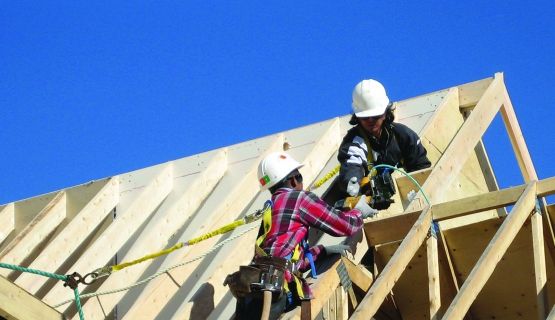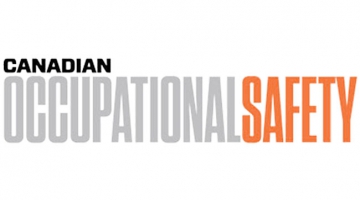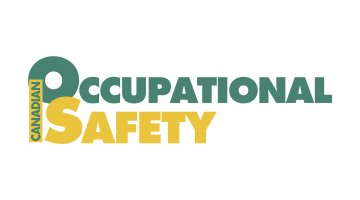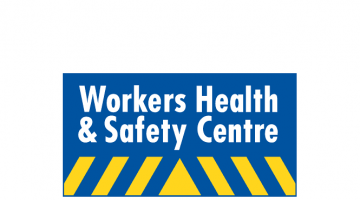Health and safety training
IWH research on occupational health and safety (OHS) training focuses on its effectiveness—from the effectiveness of delivery methods and contents to the effectiveness of training programs overall. OHS training, mandated by workplace health and safety laws in jurisdictions across Canada and beyond, is considered an important part of managing workplace hazards and risks. Such training may involve instruction on identifying occupational risks and how to control them, learning about safe workplace practices and how to properly use personal protective equipment.
Featured

Research Highlights
In-person or online: Does it make a difference for OHS training?
Online formats for occupational health and safety (OHS) training have gained popularity in recent years, especially since the COVID-19 pandemic. But are they as effective as in-person training?
Published: April 4, 2025

Impact case study
IWH evaluation of the effectiveness of the Ontario working-at-heights training standard
An IWH study on the effectiveness of Ontario's mandatory training was valuable to the labour ministry in several ways—including in reinforcing the value of program evaluations.
Published: November 21, 2023

IWH in the media
Ontario ministry could recommend changes to working-at-heights training
A testimony from William Roy, a senior Ministry of Labour, Training and Skills Development (MOL) policy manager, revealed potential changes to working at heights (WAH) training which could be implemented as soon as April.
The revelation came on day three on Ontario’s swing stage inquest into the 2009 scaffolding collapse at an Etobicoke high rise, in which four people died. Roy's testimony included suggestions for training reforms, contained in a Feb. 2019 report conducted by the Institute for Work & Health (IWH) and commissioned by the Ministry.
The revelation came on day three on Ontario’s swing stage inquest into the 2009 scaffolding collapse at an Etobicoke high rise, in which four people died. Roy's testimony included suggestions for training reforms, contained in a Feb. 2019 report conducted by the Institute for Work & Health (IWH) and commissioned by the Ministry.
Published: Canadian Occupational Safety , February 2022
Project
Project
Evaluating the effectiveness of distance learning in delivering Ontario's JHSC certification training
An IWH team is measuring the relative effectiveness of three different modes of delivering training: in-class, distance and e-learning.
Status: Ongoing

Research Highlights
Evaluating the effectiveness of mandatory working-at-heights training standards
The introduction of a mandatory training standard for construction workers using fall protection equipment is associated with a 19.6 per cent reduction in the incidence rate of lost-time claims due to falls targeted by the intervention. This decline is larger than an overall decline in injuries in the sector during the same time frame. Reductions in incidence rates are also largest among the smallest employers.
Published: September 2020
Journal article
Journal article
Preventing fall-from-height injuries in construction: effectiveness of a regulatory training standard
Published: Journal of Safety Research, September 2020

Tools and guides
Safe Work Toolkit for Newcomers (Ontario)
This toolkit contains everything needed to deliver instructional sessions to newcomers in Ontario on their occupational health and safety (OHS) and workers' compensation rights and responsibilities.
Published: December 2019

IWH in the media
New beginnings: Recent immigrants need more support to reduce their heightened risk of injury
A recent study spanning across the United Kingdom, Australia and Canada found newcomers are at a higher risk of work-related injury and illness. Canadian Occupational Safety editor Amanda Silliker speaks to health and safety professionals and researchers in Canada, including IWH's Dr. Basak Yanar, about ways to reduce risks among recent immigrants.
Published: Canadian Occupational Safety, August 2019

At Work article
Ontario’s working-at-heights training led to safer practices, reduced injury claims rates
Ontario's mandatory training standard for construction workers at risk of falls from heights was effective in reducing claims rates—especially among small employers and high-risk subsectors—an IWH evaluation study found.
Published: April 2019

IWH in the media
Regulated working at heights training works and needed: studies
Two recently released Ontario studies demonstrate why mandatory, standardized working at heights training is so critical to worker well-being. One study undertaken by the Institute for Work & Health (IWH) conducted an evaluation of the impact the province’s working at heights training standard had on workers and their work sites. A second and earlier probe prepared by the Ministry of Labour (MOL) for the Chief Prevention Officer undertook root cause analysis of worker deaths from falls from heights.
Published: Workers Health & Safety Centre, April 2019

IWH in the media
WAH training standards show 'significant' results: IWH
Findings of a study evaluating the effectiveness of Ontario’s working at heights (WAH) training standards, conducted by a team of researchers at the Institute for Work and Health (IWH), were revealed recently during the Ontario General Contractors Association’s Leadership Day and COR Open House in Mississauga, Ont., Angela Gismondi reports.
Published: Daily Commercial News, March 2019
Project report
Project report
Evaluation of the implementation and effectiveness of the Ontario working-at-heights training standard: executive summary
This summary shares the highlights from an Institute for Work & Health evaluation of the implementation and effectiveness of a mandatory working-at-heights training program introduced in Ontario in 2015. Ontario employers were required to ensure that workers on construction projects who worked at heights had successfully completed the training by October 2017.
Published: February 2019